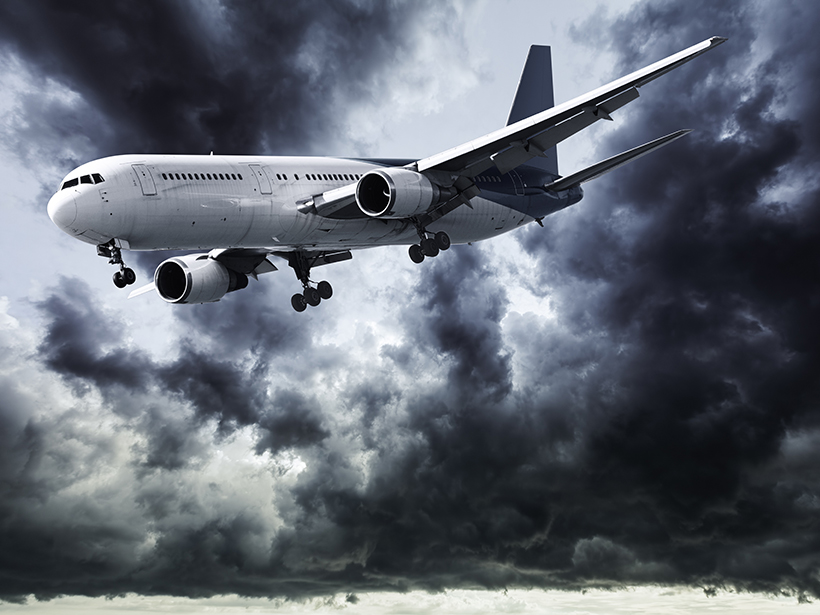Past studies have found that convective storms, like thunderstorms, cause a large portion of turbulence that plagues commercial airliners. Using those findings, a research team in the United Kingdom recently set out to create an automated system for turbulence detection that relies on lightning sensors to alert airlines of dangerous winds.
Now, following the first tests of this new system, the researchers from the Met Office in Exeter have found that airplanes flying near convective storms experience much less turbulence than they expected: Just 14% of turbulence events were associated with convective storms.
This finding sharply contrasts with results of some previous studies that estimated that between 82% and 86% of turbulence encounters were associated with convective storms. The authors of the new study suggest that other sources of turbulence, such as winds forced up over mountain ranges, should receive a greater share of researchers’ attention in the future. The Met Office team published its results in this month’s issue of the Journal of Applied Meteorology and Climatology.
Some turbulence researchers found the numbers surprising. The frequency of turbulence from convective storms “seems a little low, at least compared to over the continental U.S.,” said Robert Sharman, an atmospheric scientist with the National Center for Atmospheric Research in Boulder, Colo., who was not involved with the new study.
The Met Office researchers used an unconventional tool to pinpoint turbulent locations.
The Met Office researchers used an unconventional tool to pinpoint turbulent locations: a network of lightning sensors scattered across Europe and North Africa. These sensors can triangulate the location of lightning strikes. The areas with the most lightning strikes represented the centers of convective storms, the researchers said. Comparing these data with more commonly used indicators of turbulence sources, including satellite imagery of clouds and velocity data from aboard airplanes, allowed the researchers to study the effects of turbulence from those storms on airplanes flying near them.
Sharman said he holds some doubts about the accuracy of lightning as a storm detection method, saying that lightning may not always be concentrated in the center of a storm. Moreover, he said, it’s not clear that “just because there’s lightning that there’s turbulence.”
The new study’s disagreement with prevailing wisdom “may also indicate that convection is relatively less important as a source of turbulence over Europe and the northeastern Atlantic than over other regions (such as North America and the tropics),” the team noted in the paper’s conclusions. Many prior turbulence studies took place over North America.
However, Sharman said that it’s unlikely that significantly less turbulence occurs over Europe compared with North America.
The Met Office team ran its tests for two 6-month periods (May through October) in 2013 and 2014. The researchers noted that a future study “over a significantly longer time period” would help test the validity of the patterns they found.
—Elizabeth Deatrick, Writer Intern; email: [email protected]
Citation:
Deatrick, E. (2016), Storms cause infrequent turbulence for aircraft, new study finds, Eos, 97, https://doi.org/10.1029/2016EO053047. Published on 25 May 2016.
Text © 2016. The authors. CC BY-NC-ND 3.0
Except where otherwise noted, images are subject to copyright. Any reuse without express permission from the copyright owner is prohibited.

